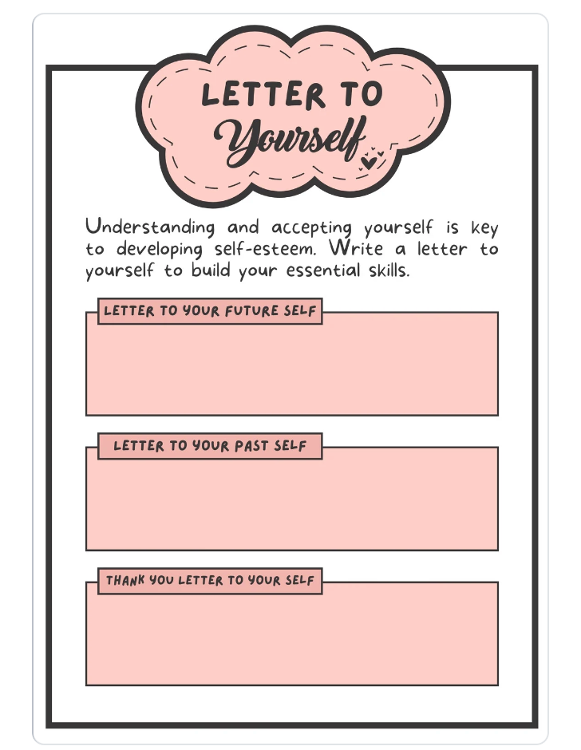As of late, it is all too easy to overlook your well-being and neglect self-care in the process when you are juggling a career that makes a positive impact on others. This blog will provide practical strategies and tools to prioritize self-care and cultivate well-being as an Educator. Included is a practical toolkit to help you take better care of yourself. We will explore common barriers and tips for establishing healthy boundaries that could help build resilience and prevent burnout.
Barrier Busting Exercise
We'll do a "Barrier Busting" exercise for our second activity. You'll each receive a worksheet with two columns: one for "Barriers to Self-Care" and one for "Solutions to Overcome Barriers." Please take a few minutes to reflect on your own personal barriers to self-care and write them down in the first column. These might include things like lack of time, feeling guilty about taking time for yourself, or not knowing where to start.
Next, brainstorm solutions to overcome these barriers and write them down in the second column. Be specific and develop actionable solutions you can start implementing immediately. For example, suppose lack of time is a barrier. In that case, a solution might be to schedule self-care activities in your calendar or to prioritize self-care during a specific time each week.
Once you've completed your worksheet, pair up with a partner and share your barriers and solutions. Offer feedback and support to each other and ask questions or offer suggestions if you have them. After partners have had a chance to share and discuss their barriers and solutions, we'll bring the group back together and ask a few participants to share their insights with the whole group.
Reframing Negative Thoughts
We think plenty of thoughts every day.
Reframing negative thoughts is an important aspect of cognitive-behavioral therapy and can help manage anxiety, depression, and other mental health concerns. Here are some tips for reframing negative thoughts:
- Identify the negative thought: Start by becoming aware of your negative thoughts. Write them down or say them out loud to yourself. Identify the situations, people, or events that trigger these thoughts.
- Challenge the negative thought: Once you have identified the negative thought, challenge it. Ask yourself, "Is this thought really true?" "What evidence do I have to support this thought?" "Could there be alternative explanations for what's happening?" You can also ask yourself what advice you would give a friend with the same negative thought.
- Reframe the negative thought: Reframing means looking at the situation differently. Instead of focusing on the negative aspects, try to find something positive or neutral about the situation. For example, if you're having a negative thought like "I'm going to fail this exam," reframe it to "I'm doing my best to prepare for this exam, and I can learn from any mistakes I make."
- Practice positive self-talk: Positive self-talk is important in reframing negative thoughts. Use positive affirmations and statements to encourage yourself and build self-confidence. Examples of positive affirmations include "I am capable," "I am worthy," and "I am strong."
- Use humor: Humor can be a powerful tool for reframing negative thoughts. Try to find something funny or absurd about the situation to help you gain a new perspective. This can reduce the intensity of negative emotions and provide some relief.
- Seek support: Talking to a trusted friend, family member, or therapist can help you gain a new perspective on your negative thoughts. They can offer a fresh perspective and provide emotional support.
Remember, reframing negative thoughts takes practice and patience. Don't expect to change your thinking patterns overnight, but with time and effort, you can learn to reframe negative thoughts and develop a more positive outlook on life.
Here’s a template from Canva that's digital. If you are interested in the printed version, it could be found on Canva.
Self-Care Challenge
The 21-Day Self-Care Challenge
Day 1-7:
- Identify your top self-care priorities and create a self-care plan.
- Practice gratitude by writing down three things you are grateful for each day.
- Engage in 15 minutes of daily physical activity, such as walking or yoga.
- Take a 10-15 minute break every few hours to stretch and move your body.
- Get 7-9 hours of sleep each night by establishing a consistent sleep routine.
Day 8-14:
- Practice mindfulness for 10-15 minutes each day, such as meditation or deep breathing.
- Reduce your screen time by unplugging for an hour each day.
- Drink at least 64 ounces of water each day.
- Connect with someone daily, such as a colleague, friend, or family member.
- Treat yourself to something you enjoy, such as a favorite snack or activity.
Day 15-21:
- Practice self-compassion by speaking kindly to yourself and acknowledging your strengths.
- Try a new self-care practice, such as journaling or taking a relaxing bath.
- Take a day off or a mental health day if you need it.
- Practice saying "no" to a request or obligation that you do not have the capacity for.
- Reflect on the self-care practices that worked best for you during the challenge and commit to continuing them beyond the 21 days.
Letter to Yourself
Writing a letter to oneself can be a powerful tool for self-reflection and personal growth. It allows individuals to express their emotions, set goals, and provide themselves with encouragement and support. Writing a letter to oneself can also help to build self-awareness and strengthen the relationship with oneself. Additionally, opening the letter later can provide an opportunity for reflection and self-assessment, which can be a helpful step in personal growth and healing.
Directions:
- Find a quiet and comfortable space: Choose a location where you feel relaxed and at ease, such as a quiet room or a peaceful outdoor setting.
- Decide on the purpose of your letter: Think about why you want to write a letter to yourself. Do you want to express gratitude, set goals, or encourage? Having a clear intention can help guide your writing.
- Start with a salutation: Address yourself in a warm and friendly manner, such as "Dear Self" or "Dear [your name]."
- Write freely and without judgment: Allow yourself to write without worrying about grammar, spelling, or punctuation. Write down your thoughts and feelings honestly and openly.
- Express your emotions: Use your letter to express your positive or negative emotions. Acknowledge your struggles, but also celebrate your successes.
- Encourage: Use your letter to provide words of encouragement and support. Imagine what you would say to a close friend going through a similar experience.
- Set goals: Use your letter to set realistic goals for yourself. Think about what steps you can take to achieve these goals.
- End on a positive note: End your letter positively, such as by expressing gratitude or highlighting your strengths.
- Seal your letter: When you are finished, seal your letter in an envelope and put it in a safe place.
- Decide when to open your letter: Decide when you want to open your letter. It could be in a week, a month, or a year. Use this to reflect on your progress and how far you have come.

Professional Break-taker
Taking breaks is an important aspect of self-care for educators, especially given their work's demanding and often stressful nature. Here are some ideas to take breaks throughout the day:
- Take a walk: Walking can help clear the mind and re-energize the body, even for just a few minutes. This picture was taken during one of my recent walks, and it was so refreshing to see the little ducks paddling.

- Listen to music: Listening to music can be a great way to unwind and boost your mood.
- Take a power nap: A brief nap can help boost energy and improve focus.
- Practice stretching or yoga: Practicing stretching or yoga poses can help reduce body tension and improve flexibility.
- Engage in a hobby: Taking a few minutes to engage in a hobby, such as reading or drawing, can help to provide a mental break and promote relaxation.
- Have a healthy snack: Eating a healthy snack, such as a piece of fruit or a handful of nuts, can help to boost energy levels and improve focus.
- Take a break from screens: Taking a few minutes to step away from computer or phone screens can help to reduce eye strain and promote relaxation.
 Additional Ideas and Resources
Additional Ideas and Resources
Other Resources
Improve your mental health with Cognitive Behavioral Therapy.
Socio-emotional development by educators for educators.
This is an infographic for teachers to use in their classrooms. It is inspired by a Twitter thread.
Discover Along, a new way for teachers to build 1:1 relationships with students. It’s a research-based, free-to-use digital tool for the classroom.
Erin Wiley has a passion for helping people become healthier: emotionally, relationally, spiritually, physically and professionally.
Mood tracking mobile application, personal diary and mood charting tool for iPhone and Android. Understand yourself better and take better control of your life with iMoodJournal.
Liz Curtis is an experienced instructional technology consultant with over 15 years of experience in education. She holds a B.S. in Advertising and an M.Ed. in Elementary Education and Teaching. Elizabeth is certified as an ISTE Educator, Google Trainer, Microsoft Innovative Educator Expert, and Apple Teacher Certified, among other certifications. She is skilled in public speaking, curriculum development, and research and holds a Professional Teaching License for the state of Ohio.